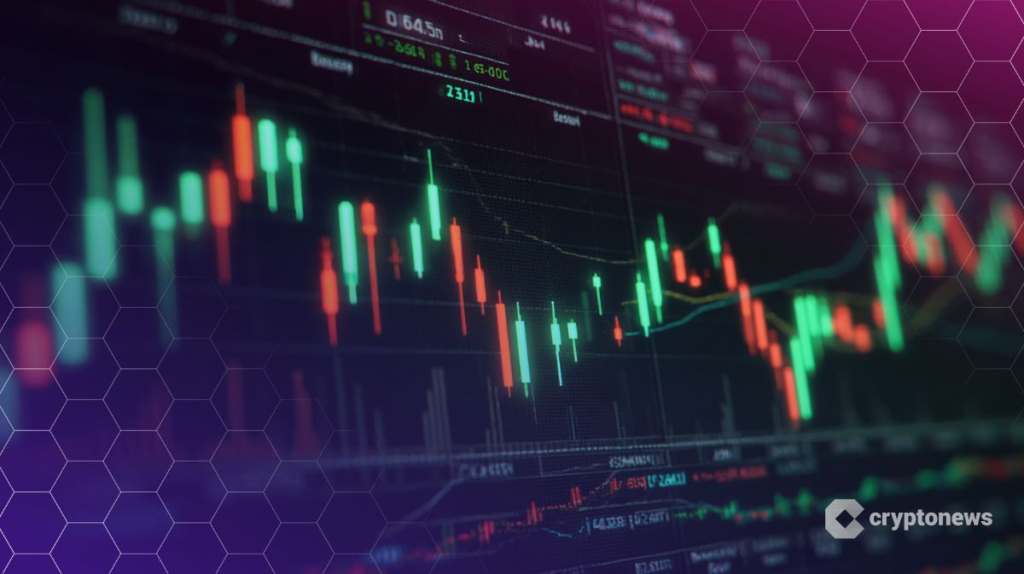Algorand is establishing itself as the leading player in the tokenization of real-world assets (RWA), boasting a significant market share of 70%, which translates to a valuation of $268.2 million, according to data from RWA.xyz.
This substantial advantage leaves competitors trailing, with XRP Ledger at $55.4 million, Gnosis at $14.3 million, Ethereum at $6.6 million, and Arbitrum at $3.9 million in tokenized assets reported.
Meanwhile, the blockchain’s performance in the first quarter of 2025, as highlighted by Messari, reflects a robust resilience in the face of broader market challenges. The market cap of stablecoins surged by 137% quarter-over-quarter, now totaling $135 million.
Leading this growth is USDC, which increased by 150% to reach $133 million, representing a remarkable 98% of Algorand’s total stablecoin supply at the end of the quarter.
The recent technical upgrades to Algorand’s infrastructure have fortified its position. The platform commenced staking rewards in January with the Algorand 4.0 upgrade, transitioning from governance payouts to direct income streams for validators.
Currently, over 2 billion ALGO tokens are staked across diverse platforms, leading to natural supply constraints and enhanced token scarcity.
RWA Shift Positions Algorand as Institutional Infrastructure
Algorand’s commanding presence in the $24.31 billion RWA market is largely due to its technical architecture, which is purposefully crafted for institutional-grade asset tokenization.
The platform’s Pure Proof-of-Stake consensus mechanism assures the security and regulatory compliance crucial for traditional financial institutions aiming to explore blockchain opportunities.
Notable corporations, including Lavazza Coffee, have opted for Algorand in their essential applications.
In 2025 alone, Lavazza Coffee has recorded over 26 tons of coffee transactions on the Algorand blockchain, incurring a mere $0.005 in fees.
This builds on a historical total of approximately 135 tons of coffee transactions recorded by Lavazza on Algorand.
Read more and see the transactions below pic.twitter.com/LsfyvO4nJO
— Algorand Foundation (@AlgoFoundation) January 24, 2025
The recent technical advancements of the platform have further solidified its position in the RWA space.
A Tokyo-listed maritime company, Mitsui O.S.K. Lines, for instance, has integrated Algorand to manage its 123Carbon tokens across its entire shipping operations.
Furthermore, Pera Wallet has formed an alliance with Algorand and integrated Immersve’s Mastercard network, enabling USDC payments at over 100 million merchants while ensuring users maintain self-custody of their assets.
The @PeraAlgoWallet Debit Card is now live.
It’s the only card in the cryptocurrency space featuring real-time, on-chain balance tracking and the ability to withdraw and deposit at any time.
No signup fee. No annual fee. Available for online and offline payments.
Experience the power of Algorand every day, everywhere: pic.twitter.com/tCoMWXkF8y
— Algorand Foundation (@AlgoFoundation) May 15, 2025
This infrastructure effectively connects traditional payment systems with blockchain settlement, a crucial aspect for the adoption of institutional RWAs and everyday utility.
With projections suggesting the tokenized RWA market could reach $30 trillion by 2030, Algorand stands to benefit greatly from its current dominant market share of 70%.
Additionally, the recent 42-page SEC proposal for RWA regulatory frameworks from Robinhood may expedite institutional adoption, favoring platforms like Algorand that possess established infrastructure.
Staking Surge and Network Effects Drive Supply Dynamics
The introduction of staking on Algorand has led to significant shifts in token economics, with over 2 billion ALGO now locked across various platforms following the launch of staking rewards in January.
This figure accounts for around 25% of the circulating supply, creating deflationary pressures that may stimulate price appreciation towards the $0.20 mark.
The shift from quarterly governance rewards to continuous staking has eradicated the cyclical supply dumps that previously influenced ALGO’s price movements.
The community-held stake has surged by 121% to 1.02 billion ALGO, while the Foundation’s stake has decreased by 38% to 497 million, indicating a move towards greater decentralization and diminished selling pressure.
Significant platforms, such as Folks Finance and Kiln Finance, have comprehensively integrated staking rewards, thereby expanding accessibility to users.
Additionally, the ALGO listings by major platforms like Robinhood Europe and Nubank have boosted retail access across seven EU jurisdictions and Latin America, respectively.
These integrations, coupled with a reduction in selling pressure from the Foundation, create favorable supply-demand dynamics that could encourage sustained price increases beyond current levels of around $0.18.
Technical Charts Indicate Key Breakout Potential
The long-term chart for ALGO reveals a significant descending wedge pattern as it approaches critical support around $0.1715, with potential breakout scenarios identifying targets of $1.00 or higher.
The prolonged consolidation appears to be nearing an apex, with past accumulation zones marked by institutional positioning during bear market phases.
Currently, the 3-day chart highlights a classic double bottom formation around the $0.16 support level, signaling that a recovery above the $0.24-0.26 resistance range could trigger bullish outcomes.
$ALGO double-bottom formation.
Its staking recently went live on https://t.co/ks2Gmcadnb.
More than 2 billion ALGO tokens have already been staked, and this number is expected to rise.
For a successful rally, ALGO must close above $0.26 on a 3-day basis.
Algorand is also now natively… https://t.co/UlAnmXnQ42
— Ted (@TedPillows) July 1, 2025
This potential breakout setup targets an initial range of $0.30-0.35, supported by the natural supply constraints arising from staking.
Furthermore, the weekly Elliott Wave analysis indicates that ALGO may be completing Wave 2 of a larger sequence, with prospective targets exceeding $7.00 if Wave 3 unfolds as expected.
Currently, the RSI stands at 44.74, indicating oversold conditions often linked to significant wave completions prior to substantial upward movements.
Nonetheless, bearish technical signals persist, with descending trendlines creating dynamic resistance, especially around the $0.25-0.27 thresholds, which could present significant challenges.
Volume patterns do not strongly support reversal scenarios, necessitating a cautious yet optimistic approach, despite the fundamental strengths stemming from RWA dominance.
The critical support level of $0.16-0.17 must be maintained to avert deeper corrections potentially leading down to the $0.12-0.14 range.
A successful defense of this support, combined with RWA market expansion, has the potential to activate algorithmic buying, driving prices towards the $0.20-0.25 resistance zones. Conversely, failure to do so might extend corrections before stabilizing at lower levels.


























